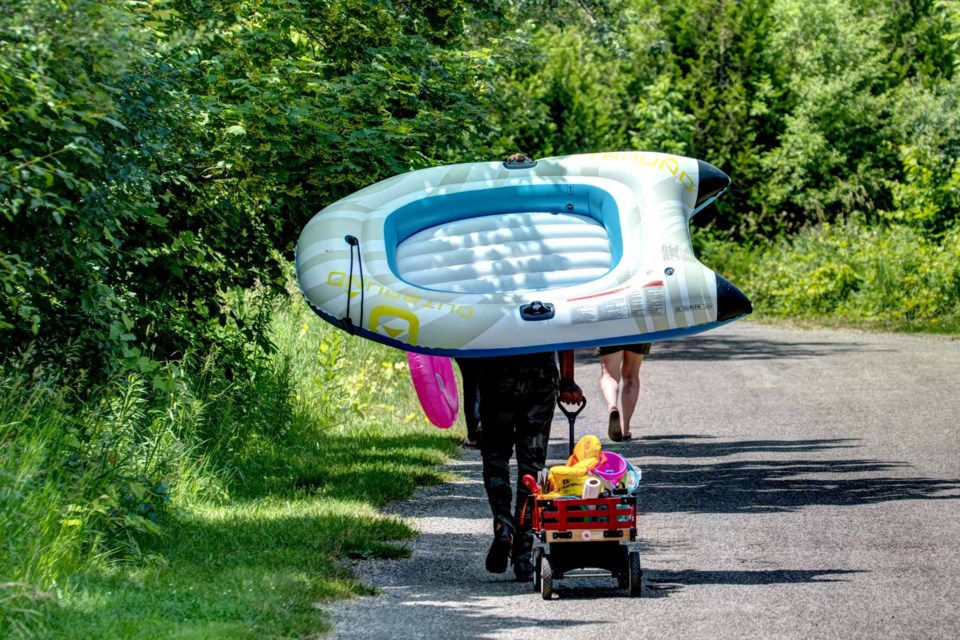Amid the tragic news of two separate drowning deaths at the Guelph Lake Conservation Area over the last two weeks, one charitable organization dedicated to preventing drowning and water-related injuries is offering their condolences - as well as a number of best practices to ensuring safety this summer.
Barbara Byers is a senior research officer with the society, and said that the end of July into early August is typically when Ontario sees the most drownings each year - particularly around the long weekend when the weather is nice, people are on holidays and children are out of school. As of Monday, Byers said the province has reported 54 drowning deaths - three more than the same time period last year.
"... almost all drownings are preventable," said Byers. "Often when they happen, people are well intentioned: they're excited, they want to go swimming, they want to go out on the water - but many times they just don't have the skills or the training to prepare themselves if they get over their heads, if they get farther out or if they get tired."
Byers emphasized the importance of ensuring that individuals learn to swim - likening the "life skill" to an immunization against drowning.
"It's not a guarantee, but it can really help your chances to be safe in the water."
Passing along key messaging from the Lifesaving Society, Byers said it's important that those swimming at beaches, lakes, campsites or conservation areas remember if they go out on the water, they'll eventually need to be able to make their way back. While going out on the water can be fun, Byers again urged caution - while adding that those who are not strong swimmers should be wearing a life jacket or wading out with something that floats to provide safety if they get too tired.
"Air mattresses and big floaty things are super fun to be on - but they can float away very easily. If you're on an air mattress and you fall off, generally what happens is the air mattress just takes off and you're stuck out there," said Byers. "Be very careful if you do hop on one of those floaty things ... you've got to figure out that you've got to get back, and you may have to get back on your own steam."
If you happen to end up getting exhausted out on the water, Byers said it's important to stay calm and keep your adrenaline under control - as thrashing and panicking can use up a considerable amount of energy.
"To do that, you should just stop swimming for a bit. Lie on your back, float on your back, calm down and get your breath under control. Try and replenish your energy and then (...) make a plan to slowly swim back to shore."
For parents with young children, Byers said that it's important that those under the age of five are watched around the water one-hundred percent of the time - as she said parents should act as a lifeguard and watch for any changes in swimming behaviour. Furthermore, Byers said the Lifesaving Society strongly recommends those youths wear a life jacket for an extra layer of protection.
"... if they get out of your sight for a minute, the life jacket will ensure their airway is out of the water," said Byers. "A life jacket is a lifesaving device. Water wings ... many people think are equal to a life jacket. They're not; they're a toy - so life jackets are really what you should have on your child."
Byers also noted that drowning is typically much quieter and quicker than what's depicted in popular media - as she said that television and film will typically show a person thrashing around and shouting "I'm drowning."
"The reality is ... when a person gets into difficulty in the water their airway fills with water and they can't speak so ... you've got to watch them with your eyes because you can't hear then with your ears," said Byers. "A drowning could happen in twenty seconds so ... keep your eyes on them and make sure they're safe out there - because every second counts if they need to be rescued."
For those enjoying motor crafts on the water this summer, Byers also said that a life jacket should always be worn.
"... every year when we look at the stats for boating fatalities, we know that about 80 per cent of people who drowned didn't have one on. Many people think they'll have time to grab a life jacket, because the requirement is to have a properly fitted one for each person in the vessel next to them ... but most drownings amongst those boating occur when someone unexpectedly is thrown into the water - and the shock alone can be just catastrophic."
"It's not like diving in - when you're unexpectedly thrown in, many people just gasp and inhale the water. If you have a life jacket on, that'll buy you time to get rescued."
While the pandemic pause did create some difficulties for parents looking to have their kids enrolled in swimming lessons, Byers said that it's important that families get back into the habit of signing up for those lessons. Arguing that adults may have their own fears and trepidation about learning to swim at a later age, she added that the best time to learn to swim is when you're a child.
